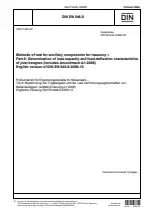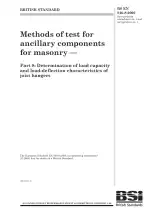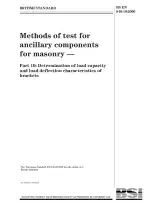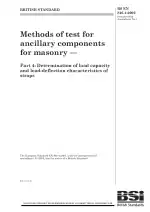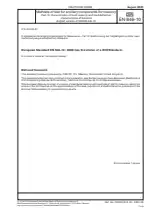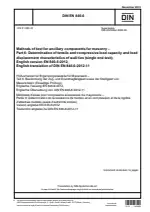Methods of Test for Ancillary Components for Masonry - Part 8: Determination of Load Capacity and Load-Deflection Characteristics of Joist Hangers
Also Known As:
The DIN EN 846-8 standard focuses on testing the load capacity and load-deflection characteristics of joist hangers. It applies to ancillary components that are used in masonry construction. The purpose of this standard is to provide a method for determining the strength and performance of joist hangers when they are fixed to a masonry wall and supporting a timber joist.
The standard outlines the procedure for conducting the test, which involves applying a specified load to the joist hanger and measuring the resulting deflection. The load capacity is determined by measuring the maximum load that the joist hanger can withstand without failure. The load-deflection characteristics describe how the joist hanger responds under increasing loads, providing information on its flexibility and ability to withstand prolonged stress.
By following the guidelines outlined in the DIN EN 846-8 standard, manufacturers and engineers can accurately assess and compare the load capacity and load-deflection characteristics of different joist hangers. This information is essential for ensuring the structural integrity and safety of masonry constructions that utilize these components. Compliance with this standard helps to maintain consistent quality standards and ensures that the joist hangers meet the necessary performance requirements.
| Descriptors | Beams, Bricks, Brickwork, Components, Construction, Determination, Loadbearing planes, Loading, Masonry, Mechanical testing, Properties, Stiffness, Strain, Strength of materials, Supports, Test pieces, Testing, Testing devices, Wood, Checking equipment, Booms (gymnastic equipment) |
| ICS Codes | 91.080.30 - Masonry |
| Language(s) | English |
| File Size | 266.2 KB |

